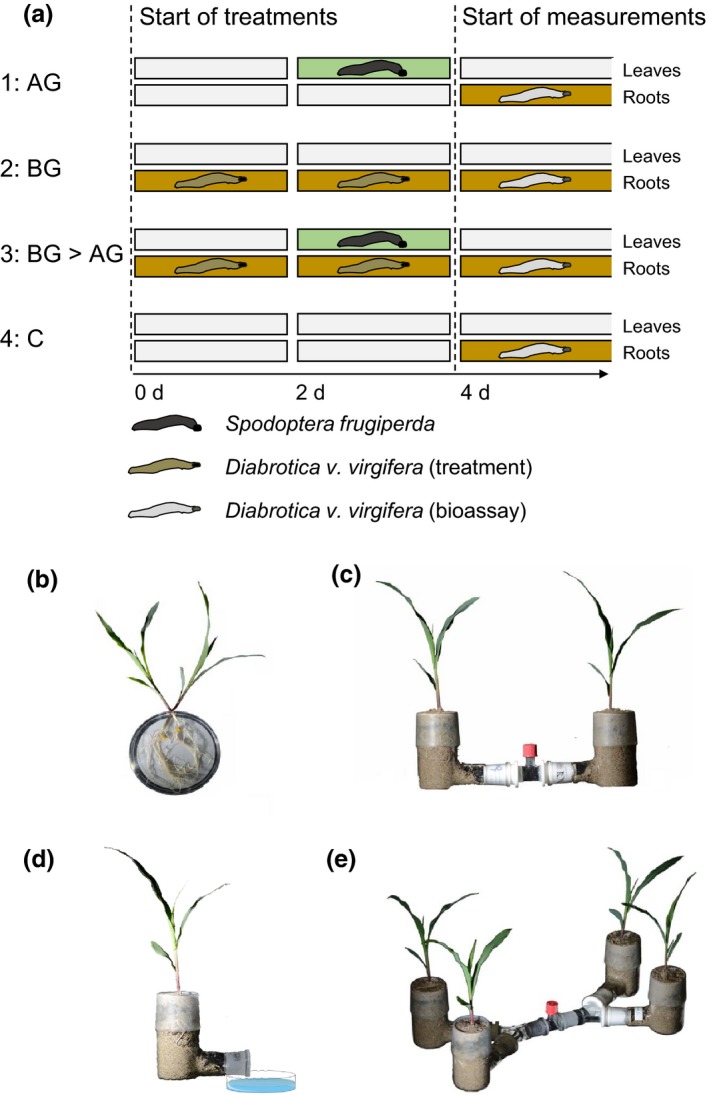Figure 1.

Overview of the experimental design and set‐ups used in this study. (a) Experimental treatments (infestation histories). To establish different sequences of arrival, second instar Spodoptera frugiperda larvae were added to the leaves, and second instar Diabrotica virgifera virgifera larvae were added to the roots of maize plants in different combinations. After 4 d of herbivore infestation, plants with different infestation histories were offered to D. v. virgifera larvae in choice and no‐choice experiments or were used for root volatile analyses. AG, aboveground S. frugiperda larval infestation; BG, belowground D. v. virgifera larval infestation; BG>AG, belowground infestation followed by aboveground infestation; C, control without herbivory. (b) Larval preference was measured by laying out the root systems of two plant on moist filter paper in large Petri dishes. (c) Volatile‐mediated larval preference was measured using a two‐arm belowground olfactometer. (d) Larval escape patterns were measured using a single L‐shaped glass pot and a water‐filled Petri dish to collect the escaping larvae. (e) Volatile mixing experiments were conducted using a two‐arm belowground olfactometer with two volatile sources attached to each arm of the central chamber. For more details about the different treatments and set‐ups, refer to the Materials and Methods section.
